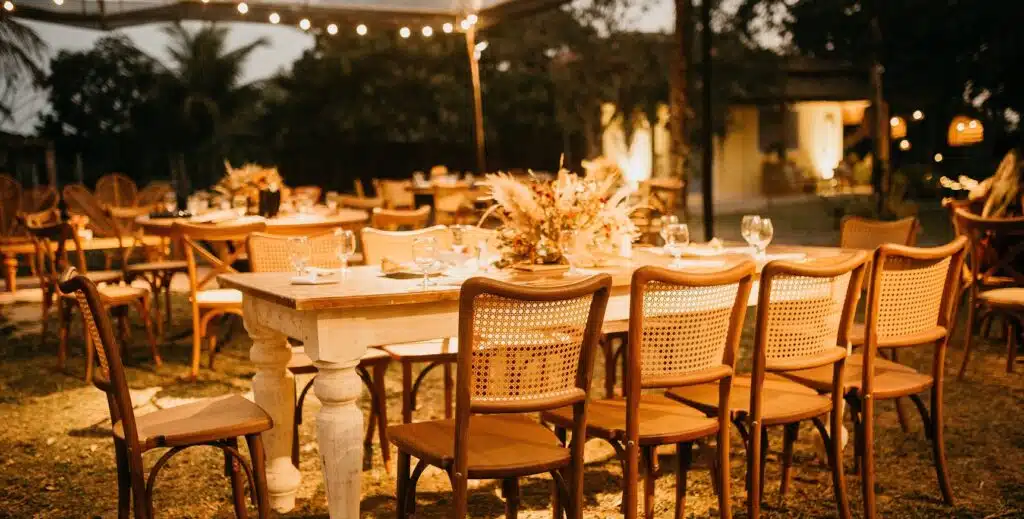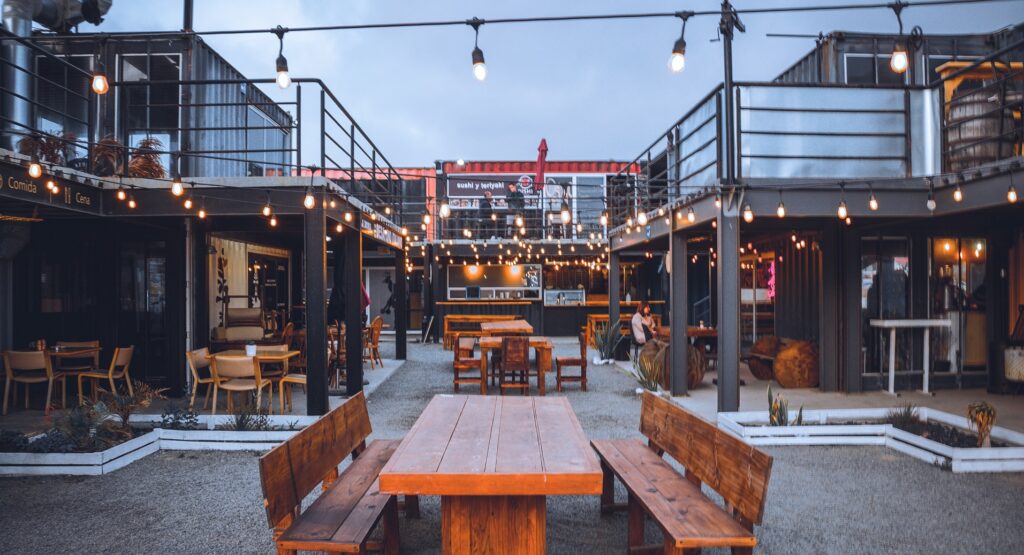LED lights are the best residential outside lighting option because they’re long-lasting, energy-efficient, and cost-effective. LED light bulbs consume only a fraction of the electricity that traditional halogen or incandescent light bulbs use. As a homeowner, you will save money and reduce your environmental footprint by using LEDs.
Lighting accounts for up to 20% of residential electricity usage in some areas, so homeowners can make significant savings simply by using LED bulbs for all residential outside lighting. If you’re using older fixtures, you may be able to upgrade the bulbs without changing fixtures. If you get a new residential outside lighting system installed from OLS, it will use LED bulbs… and you will benefit.
LED vs Incandescent Lights
Honestly, we’re not sure why anyone uses incandescent bulbs anymore.
- LEDs come in a variety of colours and wattages, so they work in any outdoor (or indoor) space.
- LEDs are mercury-free lights that do not release pollutants into the air.
- LEDs use about half of the energy required for an average incandescent bulb.
- LEDs cost more than incandescent light bulbs; however, they are much longer-lasting and can reduce the electricity bill by a considerable amount over time.
- LEDs also emit less heat, making them safer to operate and more cost-effective.
All Your Questions about LEDs for Outdoor Residential Lighting
Are LED lights suitable for outdoor use?
Yes. LED lights are generally resistant to moisture and temperature extremes, making them a valuable option for outdoor use. They need to be properly mounted in fixtures, so that the bulb itself is not continually exposed to the elements. This ensures a long life. You’ll also want to make sure your outdoor residential lighting fixtures are installed properly to avoid too much vibration.
What are the advantages of using LED lights?
Hey, did you see that list up there? LEDs are highly efficient. In fact, the energy efficiency of LEDs is measured by a factor called efficacy which measures how much light you get from an LED for every unit of power put into it. The average efficacy rating today stands at over 100 lumens per watt (lm/W). In comparison, a standard incandescent bulb has an efficiency of just 15 lm/W. The real question here is why aren’t you using LED bulbs for everything?
LEDs can be used for up to 50,000 hours before they need replacing, which means fewer replacements every year, saving you more money on maintenance costs over time. This makes them an ideal choice for outdoor applications.
Are there disadvantages to using LED lights?
LED bulbs can be more expensive than incandescent bulbs. However, since they have a much longer life and use much less energy, this up-front cost is negligible. (For example, the average lifespan for a 60W equivalent incandescent bulb is 8000 hours, whereas it is 50,000 hours for a comparable LED device.) Some people complain about the quality of light output from LEDs. This is usually due to the early days of LED bulb use. Back then, there weren’t options about the brightness and the temperature of the light emitted by the LED. It could be very harsh and overwhelming. However, that’s all changed now. Your residential outside lighting can be tuned precisely for the perfect level of brightness and light temperature, from cool to warm.
How long do LED lights last?
LEDs have a very long lifespan when compared to other light sources used in outdoor lighting today. A quality LED light source should last about 50,000 hours or more depending on the product selected and environmental conditions. That’s 13 times longer than traditional incandescent bulbs.
Is it safe to use LEDs outside, near an electrical box or cable line?
It is perfectly safe to use LED lights outside near electrical boxes or cable lines. However, you should always check with the manufacturer of your product before installation.
How bright are they?
LEDs are known for their high light output. Fortunately, current LED bulb options which we use in residential outside lighting lets us tune them to just the right look for your home. Brighter is not always better, and we can set the intensity and temperature of each LED bulb to produce the perfect effect.
What is the difference between LED indoor and outdoor bulbs?
Indoor LED lamps have a high colour rendering index (CRI), meaning that it can provide true colours of objects being lit up by your bulb. Outdoor bulbs have improved water resistance, with many available in rainproof or wet locations. Outdoor LED lights are also available in many light colours, including blue, green, red and yellow.
Indoor bulbs tend to lose their luminosity faster than outdoor bulbs because there is not as much airflow to cool the LED chips.
Do LED lights attract bugs more than other types of lights?
No, not really. Let’s take a look:
- LEDs don’t produce as much heat as other types of lights, and this is why they don’t attract bugs.
- LEDs don’t produce ultraviolet light. Since these types of lights attract bugs, this is why they aren’t as likely to attract them.
How long do LED bulbs last in residential outside lighting?
LED bulbs last for about 50,000 hours. This is why they are a great choice in outside residential lighting. They emit about 80% of their light as usable illumination for your home or garage, which is excellent since it means that only 20% of the energy used by these lights goes to waste. They’re eco-friendly and long-lasting.
Do LED bulbs work in cold weather?
They work just as well in cold weather as they do in warm weather! In some cases, LED bulbs may even work better in the cold. Because they emit a more consistent light and beam pattern, it will be easier to see outside during winter when there is snow on the ground or heavy precipitation. This can help improve safety around your home.
Can LED lights cause a fire?
LED lights are not more likely to cause fires than any other type of light.
They produce less heat, which means that they’re safer when it comes to this kind of accident. And if the LED bulb is on for a long time, then its components will be even cooler! When there are cases of LED bulbs and fire, it is due to problems with the installation.
Aesthetics of LEDs in Residential Outdoor Lighting
LED lights offer excellent light quality, which is something to consider if your space requires specific types of lighting. They are also available in a wide range of color temperatures. LED bulbs can be used for just about any application you might have.
What brightness should I use for LED lights?
The brightness of LED lights depends on how you plan to use them. If they are for accent lighting, then dimmer is better for an ambient light (rather than a blast of lumens). However, if the LEDs are used as task lighting or security lighting, you’ll want to go brighter. LED light color is also an essential factor since different colors have different brightness values (e.g., blue is brighter than red).
Do LED bulbs all have that harsh blue-white tone?
First impressions really do matter, don’t they? If you’ve been blinded a few too many times by those harsh blue-white headlights coming at you on the road, don’t worry. LEDs have come a long way. There are now LED bulbs available with different color temperatures, including 2700K (warm white), 3000K (yellow-white), 3500K (cooler yellow), and 4000K.
Are LED lights adjustable?
LED lights are adjustable. You can turn them on and off with a simple switch, dim the light by turning down the knob or change its color temperature. The brightness of LED lighting is also controllable via remote control or automated schedules that you set up with your smartphone app. We love this and we love to help our customers learn how to program their lights for different moods.
Different Types of LEDs for Residential Outside Lighting
There are many different types of LED residential outside lighting. Each type is created to be used at a specific location or purpose. It’s important for you, as a homeowner, to think about the purpose of each fixture. Of course, we’re here to help walk you through the options. Here are a few of our favorites:
- Bistro lights: String lights and bistro lights are a great way to add lighting or even decorate your home. String lights can be used year-round for picnics in the summertime, special events such as weddings, and for holiday decor. Bistro lights have been seen hanging from restaurant ceilings since 1920s Paris. If you want to up the ambiance and create an outdoor space with feeling, bistro lights will do the job.
- Uplights: Uplights are a popular choice because they create an elegant atmosphere without being too overpowering. Uplights come in different colours, shapes and sizes, so it’s easy to find the perfect choice. It’s important to use enough fixtures to create a uniform look, space them properly, and adjust the angle so you don’t create shadows or dark areas.
- Spotlights: Spotlights are there to bring attention to something specific: a tree, a landscape feature, a bed of hostas, a statue, a hardscaping or architectural feature. Spotlights come in different styles, but they all function similarly because they direct light onto an object or surface. If you use a spotlight on a living feature, it’s important to consider how the living thing will change over time and adjust the light accordingly.
- Floodlights: These outdoor lighting fixtures emit light over an extremely large area and come in multiple colour temperatures. You don’t want them everywhere–floodlights are about intensity, not ambiance–but in the right place, these fixtures provide exceptional brightness with minimal energy consumption.
Considering everything we’ve said, LED lights are good for outdoor use. They have a long life span, they don’t get hot to the touch and they save energy. If you’re looking for an environmentally friendly way to light your home or business, get in touch and we’ll talk about the options. We love helping our customers design the perfect residential outside lighting system that fits your home, your style, and your budget.




